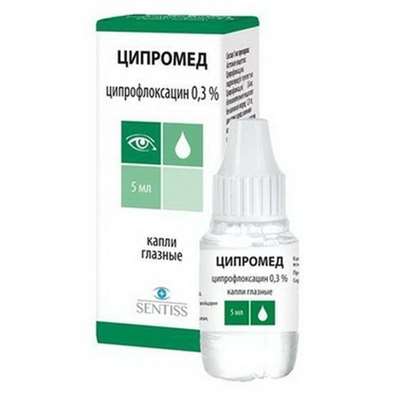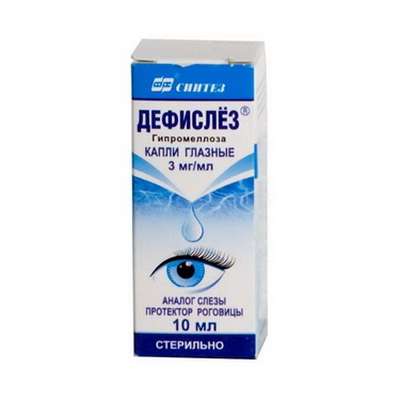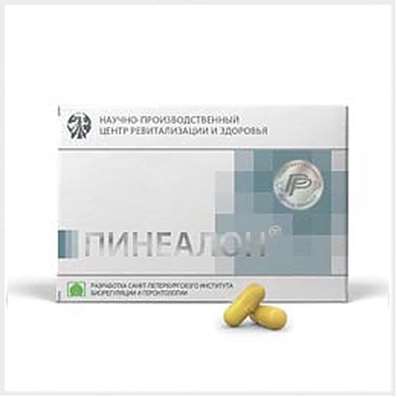Instruction for use: Movix
I want this, give me price
Active substance Meloxicam
ņ“’ M01AC06 Meloxicam
Pharmacological group
NSAIDs - Oxicams
Nosological classification (ICD-10)
M06.9 Other specified rheumatoid arthritis
Rheumatoid arthritis,Pain syndrome in rheumatic diseases, Pain in rheumatoid arthritis, Inflammation in rheumatoid arthritis, Degenerative forms of rheumatoid arthritis, Children's rheumatoid arthritis, Exacerbation of rheumatoid arthritis, Acute articular rheumatism, Rheumatic arthritis, Rheumatic polyarthritis, Rheumatoid arthritis, Rheumatic polyarthritis, Rheumatoid arthritis, Rheumatoid arthritis of active course, Rheumatoid arthritis, Rheumatoid polyarthritis, Acute rheumatoid arthritis, Acute rheumatism
M19.9 Arthrosis, unspecified
Change in brush with osteoarthritis, Osteoarthritis, Osteoarthrosis, Arthrosis of large joints, Pain syndrome in osteoarthritis, Pain syndrome in acute inflammatory diseases of the musculoskeletal system, Pain syndrome in chronic inflammatory diseases of the musculoskeletal system, Deforming arthrosis, Deforming osteoarthritis, Deforming osteoarthritis of joints, Osteoarthritis in the acute stage, Osteoarthritis of large joints, Acute pain syndrome with osteoarthritis, Post-traumatic osteoarthritis, Rheumatic osteoarthritis, Spondylarthrosis, Chronic osteoarthritis
M25.5 Pain in the joint
Arthralgia, Pain syndrome in musculo-articular diseases, Pain syndrome in osteoarthritis, Pain syndrome in osteoarthritis, Pain syndrome in acute inflammatory diseases of the musculoskeletal system, Pain syndrome in chronic inflammatory diseases of the musculoskeletal system, Pain in the joints, Soreness of the joints, Soreness of joints in severe physical exertion, Painful inflammatory joint damage, Painful conditions of the musculoskeletal system, Painful joint conditions, Painful traumatic affection of joints, Pain in the musculoskeletal system, Pain in Shoulder Joints, Pain in the joints, Joint pain, Joint pain with injuries, Musculoskeletal pain, Pain with osteoarthritis, Pain in the pathology of the joints, Pain in rheumatoid arthritis, Pain in chronic degenerative bone diseases, Pain in chronic degenerative joint diseases, Bone-joint pain, Joint pain, Arthritic pain of rheumatic origin, Articular pain syndrome, Joint pain, Rheumatic pain, Rheumatic pains
M45 Ankylosing spondylitis
Ankylosing spondylarthrosis, Marie-Strumpel disease, Ankylosing spondylitis, Pain syndrome in acute inflammatory diseases of the musculoskeletal system, Pain syndrome in chronic inflammatory diseases of the musculoskeletal system, Bechterew's disease, Ankylosing spondylitis, Diseases of the spinal column, Rheumatic spondylitis, Bechterew-Marie-Strumpel disease
Composition and form of release
Tablets 1 table.
meloxicam 7.5 mg/ 15 mg
auxiliary substances: sodium citrate dihydrate; lactose monohydrate; ICC; pregelatinized starch; povidone, crospovidone, silicon dioxide colloid; magnesium stearate
in a blister of 10 pcs .; in a pack of cardboard 2 blisters.
Description of dosage form
Round flat pills of light yellow color with a facet and a risk on one side.
pharmachologic effect
Pharmacological action - anti-inflammatory, antipyretic, analgesic.
Pharmacodynamics
Meloxicam is an NSAID with anti-inflammatory, antipyretic and analgesic effects.
The anti-inflammatory effect is associated with inhibition of the enzymatic activity of COX-2, which participates in the biosynthesis of PG in the inflammatory region.
To a lesser extent, meloxicam acts on COX-1, which participates in the synthesis of PG, which protects the mucous membrane of the gastrointestinal tract and takes part in the regulation of blood flow in the kidneys.
Pharmacokinetics
When ingested well absorbed from the digestive tract. Absolute bioavailability of meloxicam is 89%. Simultaneous food intake does not change the intake. When using the drug inside at doses of 7.5 and 15 mg, its concentrations are proportional to the doses. Equilibrium concentrations are achieved within 3-5 days. With prolonged use of the drug (more than 1 year), the concentrations are similar to those observed after the first achievement of a steady state of pharmacokinetics. Binding to plasma proteins is more than 99%.
The range of differences between the maximum and basal concentrations of the drug after its administration once a day is relatively small and amounts to using a dose of 7.5 mg to 0.4-1.0 μg / ml, and when a dose of 15 mg is 0.8-2 , 0 μg / ml, (Cmin and Cmax, respectively). Meloxicam penetrates through the histogematic barriers, the concentration in the synovial fluid reaches 50% of the Cmax drug in the plasma.
Almost completely metabolized in the liver with the formation of four pharmacologically inactive derivatives. The main metabolite, 5'-carboxymeloxicam (60% of the dose value), is formed by oxidation of the intermediate metabolite, 5'-hydroxymethylmeloxicam, which is also excreted, but to a lesser degree (9% of the dose value). In vitro studies have shown that CYP2C9 plays an important role in this metabolic transformation, the CYP3A4 isoenzyme plays an additional role.
In the formation of two other metabolites (which make up 16 and 4% of the dose, respectively), peroxidase takes part, the activity of which is likely to vary individually.
It is excreted equally with feces and urine, mainly in the form of metabolites. With feces, less than 5% of the daily dose is excreted unchanged, in urine, in unchanged form, the drug is found only in trace amounts.
T1 / 2 meloxicam is 15-20 hours.
Plasma clearance is an average of 8 ml / min. In elderly people, the clearance of the drug is reduced. The volume of distribution is low and averages 11 liters.
Hepatic or renal insufficiency of moderate severity has no significant effect on the pharmacokinetics of meloxicam.
Indications
Symptomatic treatment of the following inflammatory and degenerative diseases accompanied by pain syndrome:
osteoarthritis;
rheumatoid arthritis;
ankylosing spondylitis (Bechterew's disease).
Contraindications
hypersensitivity to any component of the drug;
bronhoobstruktsiya, rhinitis, urticaria (provoked by the reception of acetylsalicylic acid or other NSAIDs) incl. in the anamnesis;
exacerbation of peptic ulcer of the stomach and duodenum;
erosive and ulcerative changes in the mucous membrane of the stomach and duodenum, active gastrointestinal bleeding, inflammatory bowel disease;
condition after aorto-coronary bypass surgery;
confirmed hyperkalemia;
severe renal failure (if hemodialysis is not performed);
pregnancy;
lactation period;
children's age (up to 15 years).
With caution in the following diseases and conditions:
dyslipidemia / hyperlipidemia, diabetes mellitus, propensity to smoke and / or frequent use of alcohol, the presence of H. pylori infection, severe somatic diseases;
administration of oral GCS (including prednisolone), antiplatelet agents (including acetylsalicylic acid, clopidogrel), selective serotonin reuptake inhibitors (including citalopram, fluoxetine, paroxetine, sertraline);
elderly age (the control of parameters of function of kidneys is necessary), a cirrhosis of a liver, and also a hypovolemia as a result of surgical interventions;
chronic heart failure, arterial hypertension (history), established coronary artery disease, peripheral arterial and / or cerebral artery disease with circulatory failure due to reports of swelling and fluid retention caused by NSAIDs, and clinical studies showing that the use of certain NSAIDs, particularly in high doses and for a long time, may be associated with an increased risk of arterial thrombotic events, for example, myocardial infarction or nsult;
in patients taking anticoagulants;
renal failure (Cl creatinine <60 mL / min).
pregnancy and lactation
The drug is not recommended for use during pregnancy and lactation.
Side effects
On the part of the intestine: nausea, vomiting, abdominal pain, diarrhea, constipation, flatulence, erosive and ulcerative lesions of the digestive tract, perforation of the stomach or intestines, gastrointestinal bleeding (latent or apparent), increased activity of hepatic enzymes, hepatitis, colitis, stomatitis , dry mouth, esophagitis, hyperbilirubinemia, belching.
From the cardiovascular system: tachycardia, increased blood pressure, a sensation of tides of blood to the face.
On the part of the respiratory system: exacerbation of the course of bronchial asthma, cough.
From the side of the central nervous system: headache, dizziness, tinnitus, disorientation, confusion of thoughts, sleep disturbance, vertigo, emotional lability.
On the part of the urinary system: edema, interstitial nephritis, renal medullary necrosis, urinary tract infection, proteinuria, hematuria, renal failure, hypercreatininaemia and / or urea increase in serum.
On the part of the organs of vision: conjunctivitis, blurred vision.
On the part of the skin: itching, skin rash, urticaria, multi-form exudative erythema (including Stevens-Johnson syndrome), toxic epidermal necrolysis (Lyell's syndrome), increased photosensitivity, bullous eruptions.
On the part of the hematopoiesis system: anemia, leukemia, thrombocytopenia.
Allergic reactions: anaphylactoid reactions (including anaphylactic shock), swelling of the lips and tongue, allergic vasculitis.
Other: fever.
Interaction
With simultaneous application:
- with other NSAIDs (including with acetylsalicylic acid) and SCS - an increased risk of erosive and ulcerative gastrointestinal lesions and gastrointestinal bleeding;
- antihypertensive drugs (beta-adrenoblockers, ACE inhibitors, vasodilators, diuretics) - may decrease the effectiveness of the latter;
- lithium preparations - it is possible to increase lithiation cumulation and increase its toxic effect (it is recommended to control the concentration of lithium in the blood);
- Methotrexate - the side effect of the latter on the hematopoietic system is increased (the risk of anemia and leukopenia, periodic monitoring of the general blood test is shown);
- Diuretics and cyclosporine - the risk of developing kidney failure increases;
- intrauterine contraceptive means - there may be a decrease in the effectiveness of the latter;
- anticoagulants (heparin, warfarin) and antiplatelet agents (ticlopidine), as well as with thrombolytic drugs (streptokinase, fibrinolysin) - increased risk of bleeding (periodic monitoring of blood coagulability);
- colestyramine - increased its excretion through the digestive tract (as a result of binding meloxicam);
- Myelotoxic drugs - increased manifestation of hematotoxicity of the drug.
Dosing and Administration
Inside, with food, once a day.
With rheumatoid arthritis - 15 mg / day. After achieving the therapeutic effect, the dose can be reduced to 7.5 mg / day.
With osteoarthritis - 7.5 mg / day. If the dose is ineffective, it can be increased to 15 mg / day.
With ankylosing spondylitis - 15 mg / day.
The maximum daily dose should not exceed 15 mg.
In patients with renal insufficiency (if Cl creatinine> 25 ml / min), dosage adjustment is not required.
In patients with an increased risk of side effects, as well as in patients with severe renal failure who are on hemodialysis, the dose should not exceed 7.5 mg / day.
Overdose
Symptoms: impaired consciousness, nausea, vomiting, epigastric pain, gastrointestinal bleeding, acute renal failure, hepatic insufficiency, respiratory arrest, asystole.
Treatment: carrying out gastric lavage, the appointment of activated charcoal (within the next hour), symptomatic therapy. There is no specific antidote. Kolestyramin accelerates the removal of the drug from the body. Forced diuresis, alkalization of urine, hemodialysis are ineffective because of the high degree of binding of the drug to blood proteins.
special instructions
Patients taking both diuretics and meloxicam should take a sufficient amount of fluid.
If allergic reactions (itching, skin rash, hives, photosensitization) occur during treatment, stop taking the drug immediately.
If allergic reactions (itching, skin rash, hives, photosensitization) occur during treatment, stop taking the drug immediately.
Adverse reactions to taking the drug can be reduced by using the lowest effective dose for the shortest period of time.
Management of vehicles, maintenance of machines and mechanisms. As a result of the use of the drug, it is possible to develop unwanted effects in the form of headache and dizziness, drowsiness in some patients. They are advised to refrain from driving vehicles and servicing machines and mechanisms that require concentration.
Conditions of leave from pharmacies
On prescription.
Storage conditions
In a dry, the dark place at a temperature of no higher than 25 į C.
Keep out of the reach of children.
Shelf life
2 years.
Do not use after the expiry date printed on the package.

 Cart
Cart





